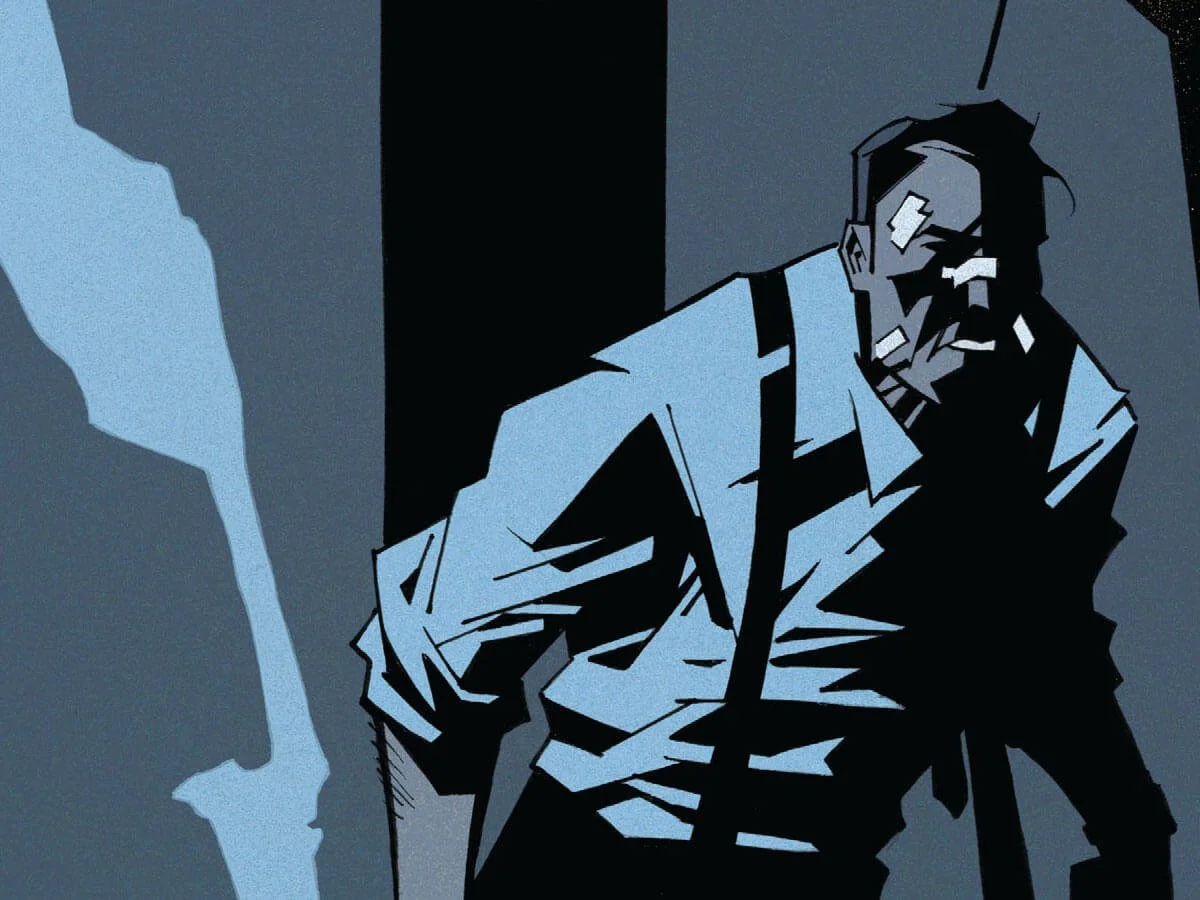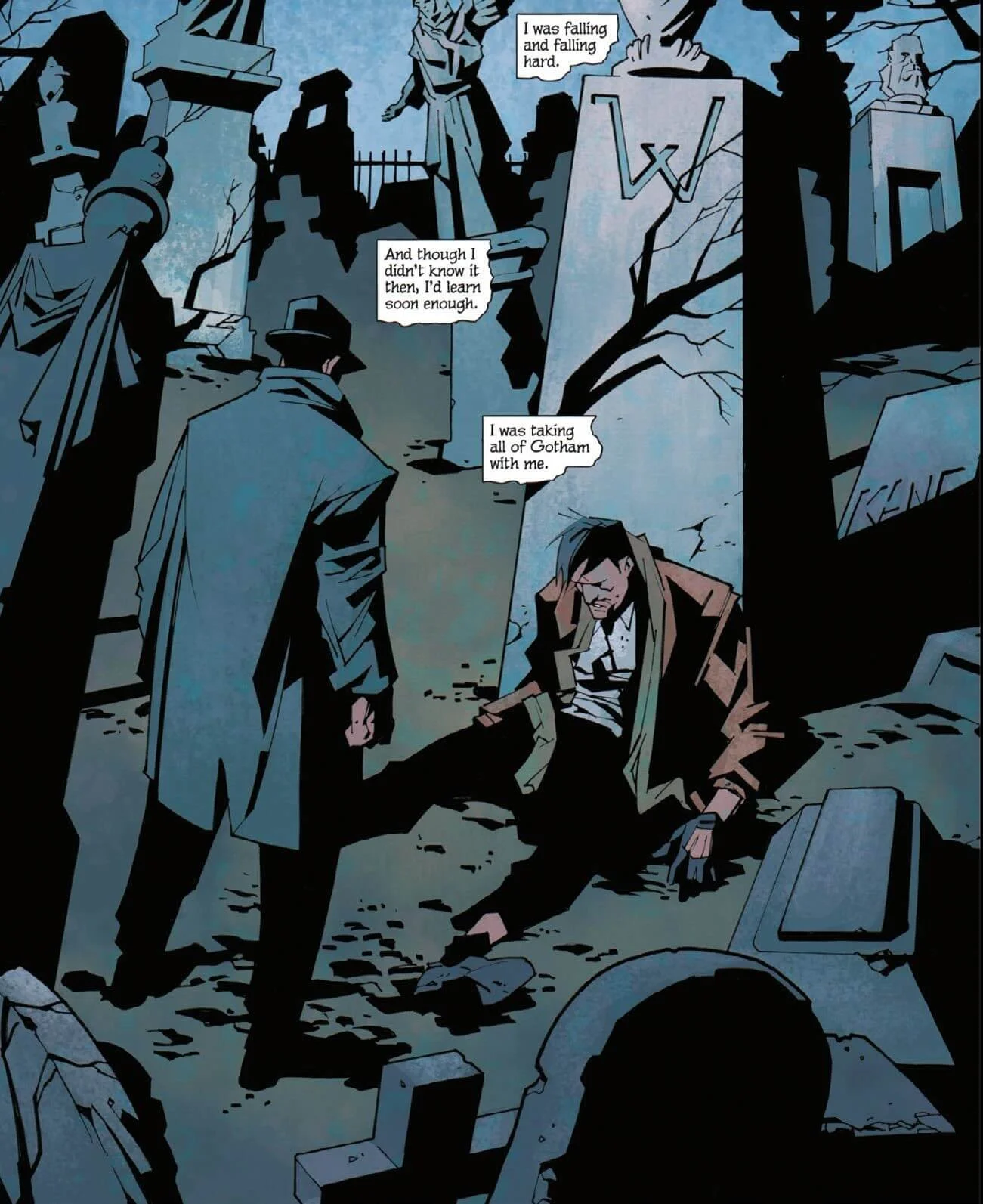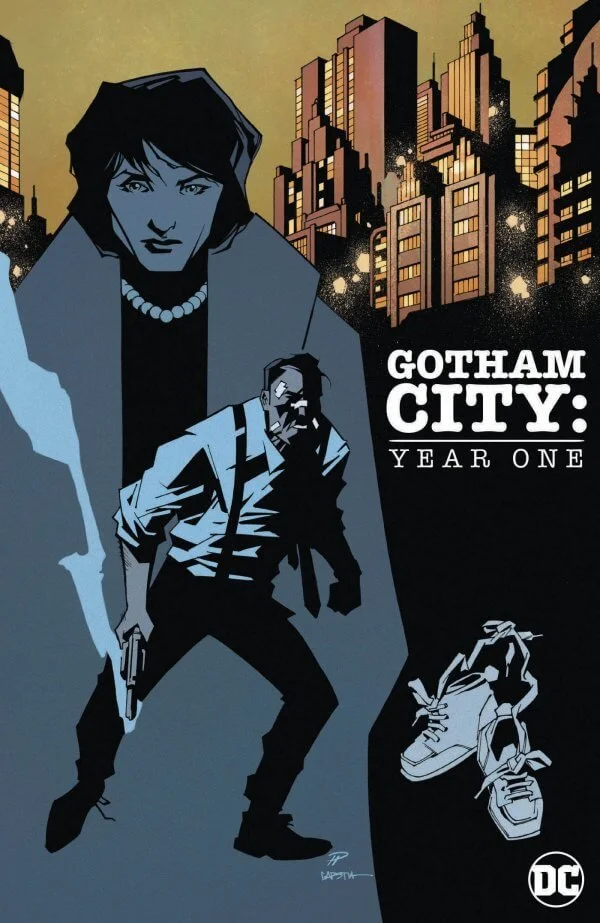Writer: Tom King / Penciller: Phil Hester / Inker: Eric Gapstur / Colour Artist: Jordie Bellaire / Letterer: Clayton Cowles / Collects: Gotham City: Year One #1-#6 / HC / DC Comics
Review by Paul Dunne
16th September 2023 (Released: 6th September 2023)
The Pitch: There once was a shining city on the water, a home for families, hope, and prosperity. It was Gotham and it was glorious. The story of its fall from grace, the legend that would birth the Bat, has remained untold for 80 years.
That’s about to change.
Superstar creators Tom King and Phil Hester team up for the first time to tell the definitive origin of Gotham City: how it became the cesspool of violence and corruption it is today, and how it harbored and then unleashed the sin that led to the rise of the Dark Knight. Two generations before Batman, private investigator Slam Bradley gets tangled in the “kidnapping of the century” as the infant Wayne heir disappears in the night…and so begins a brutal, hard-boiled, epic tale of a man living on the edge and a city about to burn.
Comics, like most art, are a mirror, not a telescope. A reaction to the real world. More than most, this book bears the weight of the outside world and real (historical but not past, it seems) political events. DC and Marvel comics are cognizant of the 'real world', as you would expect of the politically aware, intelligent writers who craft their stories. But these are often deployed to give a sounding to readers, rather than being integral to the plot. In Gotham City: Year One, we're very much in a political landscape we can recognise, because sadly oppression never dates the way pop culture does. We're in ‘60s Gotham, without The Batman, and even the ingredients for his creation are barely perceptible in the ether of the city. The baby boomers are in full effect, with each generation having it better than the last. The sun shines, Gotham is welcoming, rewarding, and Slam Bradley, once a cop but now a private eye, is basking in Gotham's glow. Sure, the spectre of America's forgotten war in Korea lingers. But the city surges forward to prosperity, driven by The Wayne Family. Only we're not dealing with Thomas and Martha. This is Richard and Constance. Grandparents to Bruce Wayne. And in them, we see people who do not have the same compassion that their children would have. They run strictly for profit, happily oppressing people of colour. Until the city turns on them and takes the one thing in their lives that can't be bought. And then the book turns, too, bringing to mind dark stains on the American cultural landscape, like the Lindbergh kidnapping.
This Year One brings to mind dark stains on the American cultural landscape, like the Lindbergh kidnapping.
Although this Year One is not a Batman book, his presence haunts the story - An elderly Slam tells the sordid history to Bruce Wayne, the kidnapper calls himself The Batman, and Queenie, one of the book's tough women, prefigures Selina Kyle. Bruce is shown how shaky the ground he stands on really is. But he's not the only character getting new colours added to him. A new canon gets written for Slam, but unlike the one Richard Wayne wants to write for Gotham, this one is built on integrity and truth. But even this integrity has to give way to the city, the dark machine, that Gotham wants to become. Even Slam Bradley must bend.
A man who must bend - or break.
The comic digs at the things on which Gotham and its citizens - even Batman - have built their truths and which may not be the solid foundations they think they are. Beneath the prosperous city lies race hate. Beneath the marriage of Gotham's most prominent couple lies loneliness and a loveless nature. Beneath the new future Richard Wayne is trying to build lie bodies. Like David Lapham's City of Crime a good decade or more back, Gotham City: Year One speaks to the darkness that seeps up from the streets of all cities. Sartre said that hell is other people and in Gotham that rings truer than anywhere else. This is true of the book's influences too.
Riffing on Robert Mitchum: Hester’s Slam Bradley.
As Mazzucchelli based his Bruce Wayne on a young Gregory Peck, Hester riffs on an ageing Robert Mitchum and all the difficult morals that came with him. Peck was the dignified poster boy for collegiate, dignified America, somewhere between Capra and John Ford. Mitchum seemed to speak of a complicated relationship, the one America has with its history. The new wave, Altman's The Long Goodbye and Penn's Night Moves. The America that hated itself. Fair warning: The book takes some pretty dark turns. It's a confessional, after all. It's proof positive that trauma and the lingering ghosts of trauma are not just Tom King's domain, but Gotham's. Nietzsche warns that when you look long into the abyss, the abyss also gazes at you. How true that must be for all of Gotham. The city that never sleeps, but always has nightmares.
The city that never sleeps but always has nightmares.
King orchestrates those nightmares well, bringing Gotham's past and the story's present into a neat meeting point. And by neat, I mean the sharp end of the knife. Slam's journey into the underbelly is pugilistic and bloody. Violence is the dialogue by which the male characters in the story communicate. Like proper Noir, this has the constant threat of broken ribs and noses hanging in the air. Hester creates sharp edges and dynamic, active lines, keeping the images moving like pistol fire. He illustrates the tragedy like a man who understands the emotional weight of what he's being asked to show. He's aided and abetted by Gapstur whose inks etch the images into your brain making sure you get the message: this town is trouble. Superlatives are in order for Bellaire too, who weaponises her colours, stripping the palette back efficiently in the opening chapters and adding more blood as needed, giving you a real sense of how 'filthy rich' might just mean 'filthy'. Cowles gives us Slam's voice, which in our heads has always been tinged with tobacco, aged whisky, and, well, just age and adds a dash of hope. At least for a while, until Gotham's awful nature creeps in and snatches that away. Slam's diary entries make a nice counterpoint to Bruce's in Batman: Year One. Bruce was building something dark yet hopeful. Slam is watching hope burn. By the end, you're only satisfied of one thing: you've read a good story, well told. Moral satisfaction isn't part of the deal. To read this story is to make a pact with its horrible nature. Gotham: Gotham Year One might be hailed as a modern masterpiece in years to come and if it does, it will be a title earned, not given. I hope you take the chance on it and look into the abyss if only to see what is gazing back.
You can buy Batman comics from The Comic Crush. Gotham City: Year One Hardcover is available from your local comic shop.







